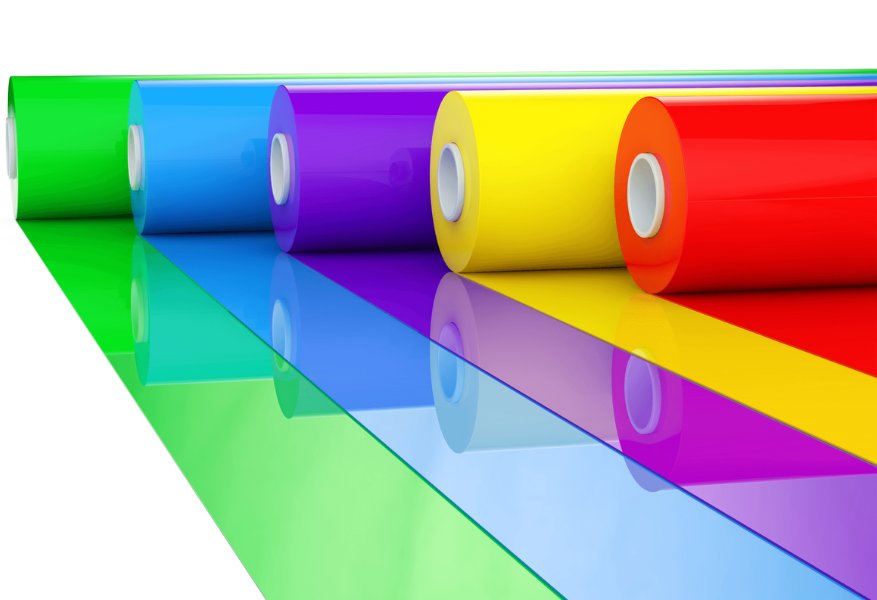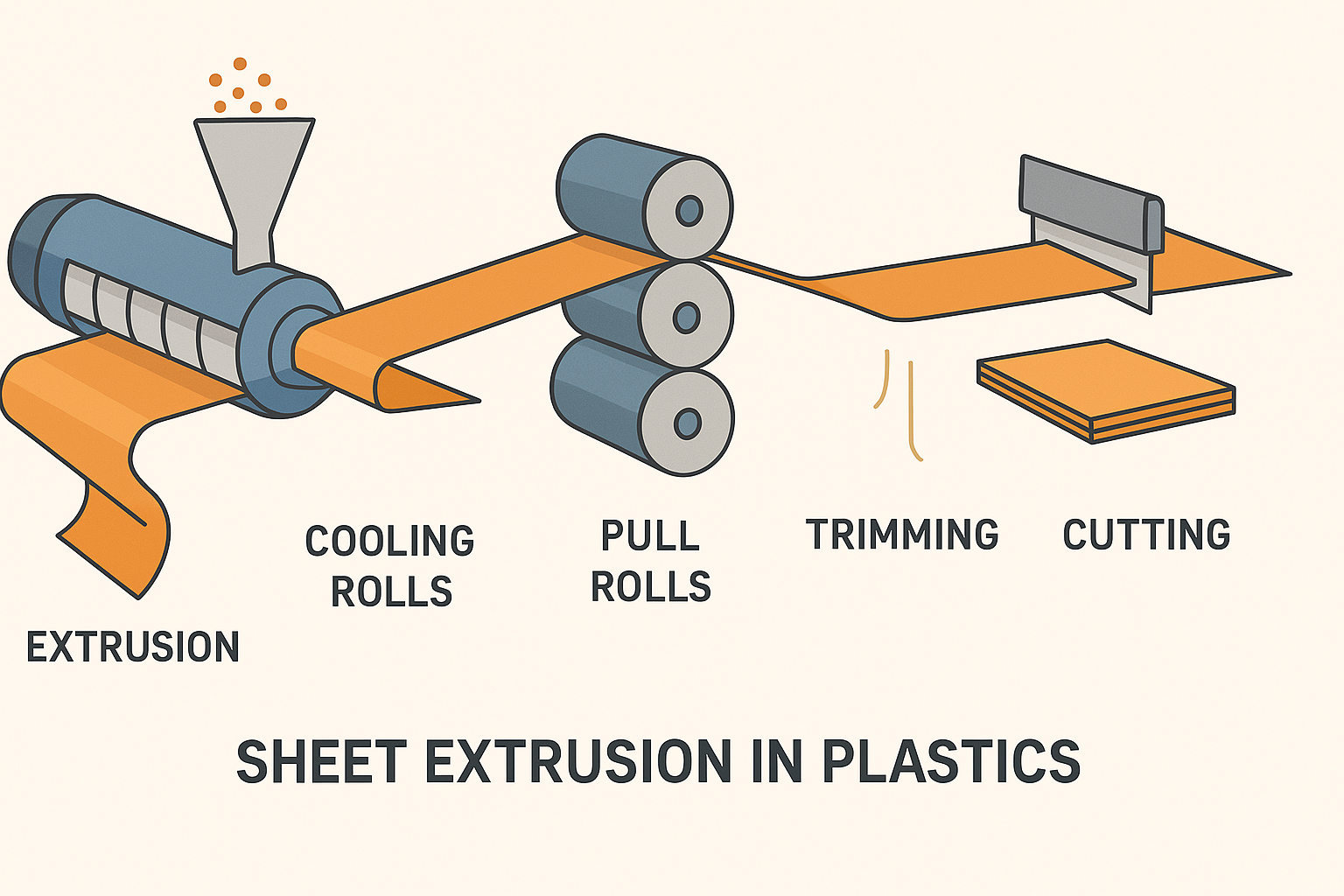SHEET EXTRUSION
Sheet extrusion is a continuous manufacturing process used to produce flat plastic sheets or films. These sheets are often later converted into thermoformed products, laminated panels, or packaging materials.
Benefits of Sheet Extrusion
- Cost-efficient: Economical for high-volume production of plastic sheets.
- Consistent quality: Produces uniform thickness, smooth surfaces, and reliable properties.
- Material versatility: Accommodates recycled content, filled materials, or specialty resins.
- Post-process flexibility: Extruded sheets can be thermoformed, die-cut, printed, or laminated.
- Customizable: Enables multilayer, colored, textured, or embossed sheets.
- Recyclability: Scrap and edge trim can often be reground and reprocessed.
- Inline integration: Can include lamination, cutting, and winding in the same production line.


The Process:
The Process:
- Feeding
- Plastic pellets or granules are fed into a hopper and conveyed into an extruder.
- Melting
- Inside the extruder barrel, the plastic is heated and mixed as it’s pushed forward by a rotating screw.
- Extrusion through a flat die
- The molten plastic exits through a sheet die that shapes it into a wide, flat profile.
- Calendering (Roll Stack)
- The extruded sheet passes through a series of chill rolls that control: Thickness (via roll gap), Surface finish (glossy, matte, or embossed), and Cooling (to solidify the sheet).
- Pulling & Cutting
- A puller draws the sheet through the line, and a cutter or winder cuts it to size or rolls it up for storage.
Decision Drivers
Decision Drivers
- Production Volume: Suited for medium to high-volume runs. Economical for continuous, repeatable production.
- Surface Finish & Aesthetics: Can be combined with co-extrusion for layered effects (e.g., glossy top layer, recycled core). Not ideal for textured grips or logos.
- Downstream Processing: Consider whether the sheet will undergo thermoforming, die cutting, lamination, or printing.
- Material Compatibility: Works well with thermoplastics but may not be ideal for materials requiring high molding precision or structural integrity.
- End-Use Application: If the final product is a sheet or flat form, extrusion is often the most efficient.
 CONSIDER
CONSIDER